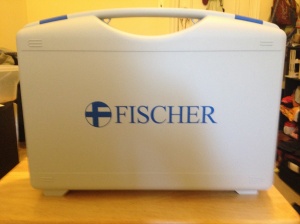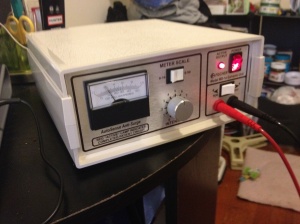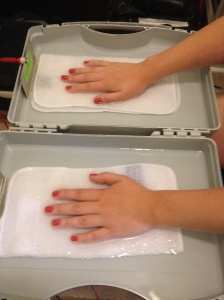Since young, i’m born with sweaty palms, real bad kind – My sweat drips down from my palm! Serious! I’m not exaggerating. I’ve sweaty feet too. That’s why i hate wearing slippers! =(( My feet tends to slip off from the slipper and i’ve to walk really slow.
If i wore a shoe from home to market, it took me simply 8-10mins. If i wore slipper, i need 15-20mins! It’s like even if u tried to walk as fast as you can, you will feel that the slipper and the feet just don’t coordinate well.
It’s really awkward to have this problem. I hate to shake hands with people, i hate to join camp due to those ice-breaker game which need physical contact, i hate to use tissue to put underneath my hands when i write but if i don’t do this, the paper will tear. i hate the sweat, simple things like breaking of medicine into half is tedious to me. Either the medicine melts or i just couldn’t break it! =((
Have i ever try to solve this problem? YES I DID! I went to polyclinic asking the doctor to refer me for specialists as i’m keen in doing the surgery – i was then referred to Neuro Surg!
Consultation – Neuro Surg! OMG! i got a shocked! The doctor asked me if i’ve tried any medical treatment? such as Iontophoresis or even like deodorant. Having my answer as no – he referred me to dermatologist and gave me an open date to go to him anytime within 3 months.
Went to see dermatologist in SGH – Was told that Iontophoresis is not available. ONLY IN NATIONAL SKIN CENTRE. I was then prescribed with some deodorant and discharged from Derma in SGH and referred to NATIONAL SKIN CENTRE. But story ended here. Bcos the clinic only gave me the date for the appt 1 DAY BEFORE THE APPT! I told the person i cant make and expecting them to gave me another date. She said she will call me back. BUT SHE DIDNT! I could simply call and make my own appt but i didnt. I didnt went back to neuro surgery too.
I WAS AFRAID! I’M SCARED! The doctor told me that the surgery is something like this…
Named ENDOSCOPIC TRANSTHORACIC SYMPATHETOMY.
1) Chest X-ray needed to be done and making sure my lungs are good for the surgery
2) They will have to deflate one of my lungs and then they will be able to reach the sweat gland. – LEFT LUNG FOR LEFT HAND
3) Inflate my deflated lungs back and deflate the another one. – RIGHT LUNG FOR RIGHT HAND
Complications – in accident, they might accidentally poke through my lungs. – then i’ll have to have this chest drainage to drained out the bloods or air =.=”
He said – surgery might not cure completely, Sweat might changed to other parts of the body like thighs, back of the back or even more sweaty feet aka compensatory sweating. Oh damn! AFTER HEARING ALL THESE, I BACK OUT of cos! HAHAHA! I told my parents about this and they changed their mind – NO SURGERY IS ALLOW!



